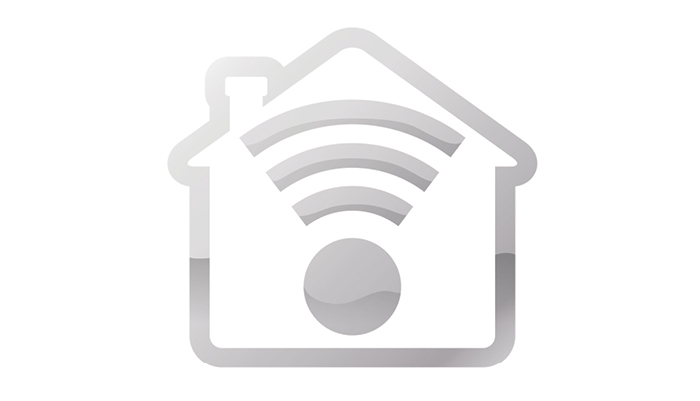All
Are Smart Thermostats Making a Connection?
by Samuel Diamond

Just one in eight: of 118.2 million U.S. households surveyed, that’s how many actually programmed a thermostat to control their air conditioning, according to the EIA Residential Energy Consumption Survey (RECS) for 2015. That one-eighth, or 12 percent, works out to about 13.9 million homes across the U.S.
“About one in three households using central air conditioning do not have a programmable thermostat,” wrote the EIA in the July 19 edition of “Today In Energy.” “But even for those households that use central air conditioning and have a programmable thermostat, more than two-thirds of those households control temperatures without actually programming the thermostat.” And in the Northeast, the numbers are even lower; here, just 1.6 million of 21 million total households used a programmable thermostat to adjust their central air conditioning.
The numbers are higher for home heating systems in the Northeast. According to the RECS, 4 million Northeast households program their thermostats to automatically adjust their heating equipment. Hone in on New England, and you see that 0.9 million of 5.6 million total homes, about one in six, use their programmable thermostat for home heating.
Those figures are relatively positive, but look at the numbers for smart thermostats and you’ll see a totally different picture. Nationwide, only 4 million households owned a smart thermostat, as opposed to 94.3 million that didn’t. Perhaps most surprising, more respondents (a total of 6.2 million) said they didn’t know if they had a smart thermostat than said they owned one.
Could there be a disconnect between the connected home and its residents?
While one might be tempted to deduce from the above figures that home connectivity is a passing trend, or one that still hasn’t really caught on, it’s important to note that the 2015 RECS collected housing characteristics data from August 2015 to April 2016. Since then, it’s likely that more smart thermostats were installed and few were uninstalled. To this point, a study that came out of Sweden in July 2017 estimates that the number of homes with smart thermostats in all of North America reached 7.8 million in 2016 and will grow to 43.4 million by 2021.

Nevertheless, the question remains: will so-called connected homeowners take full advantage of their smart thermostats, or will the under-utilization trend carry over from programmable thermostats to internet-connected models?
Knowledge Gaps
One possible takeaway from the 2015 RECS data would be that homeowners aren’t utilizing their programmable thermostats, because they don’t know how to do so. Programmable thermostats have been common HVAC offerings for more than a decade, so setting them up is second nature to heating and air conditioning technicians.
But what about the consumers?
During installations, technicians can show homeowners how to program and adjust thermostats, but will it stick? And if it doesn’t, what’s the likelihood that the homeowner is going to call for a crash course in thermostat scheduling?
With these considerations in mind, manufacturers like Honeywell have been aiming to simplify thermostat technology. “Honeywell has worked to make programmable thermostats simpler to work with over the years, always improving the controls and designs to help people get the most out of their thermostats,” says Nate Kraft, Senior Director at Honeywell, Global Innovation and Business Management. “We have invested a significant amount of time in consumer research with our design teams, and our latest T Series products are great examples of where we believe the market should go.”
Honeywell produces a number of Wi-Fi connected thermostats, including the Lyric™ Round and Lyric T5 models, which can be controlled via smartphone app or with a voice assistant like the Amazon Echo, Google Assistant or Apple’s Siri.
Indeed, one of the biggest selling points of smart thermostats has been hands-off control. Users don’t have to learn how to program the smart thermostat, because they can easily adjust it from anywhere using their connected mobile devices, and in some cases, the smart thermostat can actually “learn” the users’ preferred settings and adjust itself automatically.
Of course, empowering the consumer doesn’t necessarily mean taking the contractor out of the picture. “HVAC contractors are growing more comfortable every day with recommending, selling, and installing connected thermostats,” says Kraft. “We believe that the businesses who will win in this space are accelerating their efforts within this area, both because it is something consumers are looking for and because it actually increases revenue and profitability for the contractor.”
To that end, contractor-training courses can illuminate the finer points of smart thermostat sales tactics as well as installation and troubleshooting techniques. “Honeywell believes in the power of contractor education and invests heavily in online training tools, and interactive webcasts with our product experts and marketing team,” Kraft says. “Most importantly, we use our world-class sales team to conduct in-person contractor outreach and training sessions all across the Americas every week of the year.”
Other intelligent features of popular smart thermostat models include automatic response to changes in outdoor temperature or humidity conditions, and geofencing, which employs GPS software synchronization to tell the thermostat when users are home or away based on the location of their mobile devices.
GPS isn’t the only kind of system that smart thermostats are capable of syncing up with. These days, more and more manufacturers are marketing their smart thermostats as components in a complete home automation package.
In addition to Lyric Thermostats, Honeywell produces a Lyric Security Camera, Lyric Water Leak and Freeze Detector, and Lyric Security and Home Control System, which provides users with Wi-Fi access to all of their connected home comfort and security devices. “Connected products offer a much simpler way to manage comfort in your home because a smartphone creates a much richer user experience,” says Kraft.
Nest Labs and Carrier are two other brands that entered the Wi-Fi arena with smart thermostats and proceeded to branch out from there. Today, some fuel and home comfort providers are following suit.
Other Entry Points
In the August issue of Oil & Energy, an article titled “Who Monitors the Monitors?” featured a number of Wi-Fi-enabled tank monitors that fuel dealers can market to their customers. Like smart thermostats, tank monitors relate directly to home comfort service (specifically, home heating), providing an obvious opening for energy marketers looking to expand their “connected home” offerings. Home water protection devices, like the Lyric Water Leak and Freeze Detector mentioned above, are not as directly associated with HVAC, but still well within the purview of the full-service home comfort provider.
Devices like Wi-Fi security cameras and alarms, on the other hand, might be uncharted territory. Some states require contractors to obtain security licenses in order to install alarm systems and surveillance cameras, so home comfort providers considering branching into connected home security should always consult the appropriate regulatory bodies beforehand. The solution might be as simple as hiring a licensed security contractor … or it might be more involved, depending on local laws and ordinances.
Nevertheless, comfort and security are just two entry points into the world of home automation. Other connected home appliances include smart lights, locks, sensors, garage door openers, energy management systems, smoke and carbon monoxide detectors, refrigerators, voice recognition systems … and the list goes on!
And while intuitive user interfaces are a defining trait of many of today’s smart gadgets, well-trained home comfort providers remain optimally positioned to not only turn households into connected homes, but also to ensure that these homes’ residents understand how to take full advantage of the technology now at their disposal.
Related Posts
 The Value of Providing Value
The Value of Providing Value
Posted on October 16, 2025
 2025-2026 Winter Weather Outlook
2025-2026 Winter Weather Outlook
Posted on October 16, 2025
 Gray, Gray & Gray 2025 National Energy Industry Survey Results
Gray, Gray & Gray 2025 National Energy Industry Survey Results
Posted on September 19, 2025
 New Burners Take on All Fuels!
New Burners Take on All Fuels!
Posted on July 28, 2025
Enter your email to receive important news and article updates.
